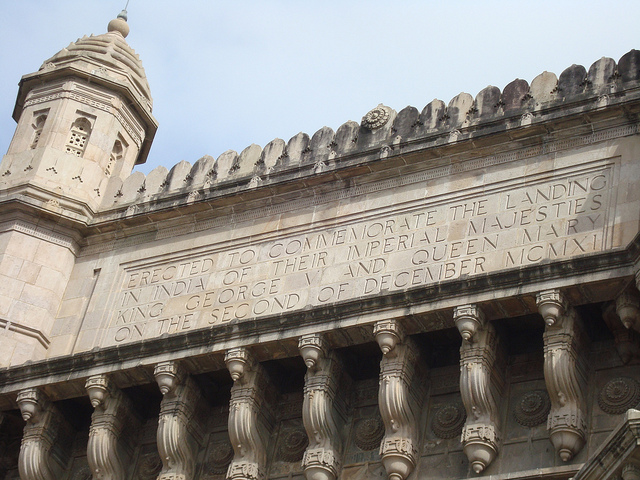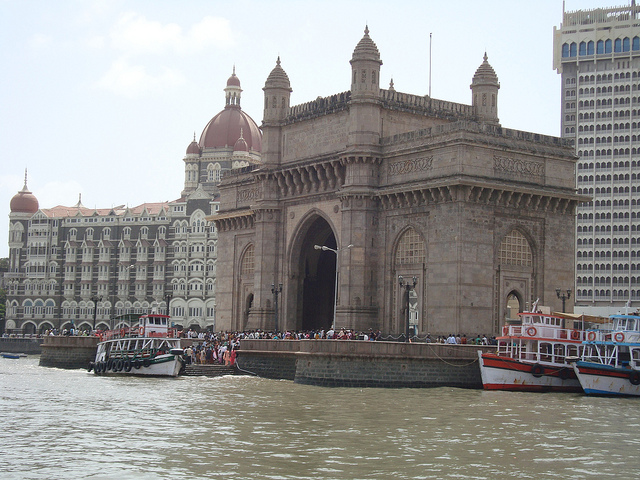The Gateway of India is a well-known monument in the Mumbai city of Maharashtra. It was built during the British Raj in India. Its foundation was laid on 31 March 1911. The Gateway of India looks amazing when looked from a boat or ferry from the Arabian Sea. It was used mostly as an arriving point for British governors and many other prominent people. This was the only structure in earlier times which was used for arriving in Mumbai, by boat. It is sometime referred to as the Taj Mahal of Mumbai. It is a major tourist hotspot in Mumbai. It is a great place to review the history of India during the British rule.
The whole structure was erected to commemorate the landing of their majesties King George V and Queen Mary at Apollo Bunder. The governor of Bombay Sir George Sydenham Clarke laid its foundation on 31 March, 1911 after getting the final design from George Wittet. The foundations of this exquisite structure were completed in 1920 and construction was finished in 1924. The Viceroy, the Earl of Reading opened it on 4 December 1924. This is the structure through which the last British troops left India following the country’s independence and marking the end of British rule on 28 February 1948.
The design of the Gateway of India follows a combination of western and Indian (Hindu and Muslim) architectural design. George Wittet combined the elements of the Roman triumphal arch and the 16th century architecture of Gujarat. Its arch is made of basalt and stands 26 meter tall. The arch is made in Muslim style while the decorations on the arch are in Hindu style. The central dome is 48 feet in diameter and 83 feet high. On each side of the arch, there are large halls that can hold around 600 people. On the right-hand side, the Taj Mahal Palace & Tower hotel lies. Back in the days during British rule, it was the symbol of British Empire’s power and magnificence for those arriving in India for the first time.
Opposite to the gateway, there is a statue of Chhatrapati Shivaji Maharaj which is the symbol of the Maratha pride in Mumbai. It was unveiled on 26 January 1961 on the occasion of India’s Republic Day. The Gateway of India is also the starting point for tour of the Elephanta Caves. It usually takes a 50-minute boat ride to reach the famous Elephanta Caves.






bnomadic
August 19, 2013 at 4:47 pm
Beautiful description and images.
seniorhiker
August 19, 2013 at 5:29 pm
This is a very impressive structure. Thanks for sharing the history along with the wonderful photos.
indrani
August 20, 2013 at 7:10 am
Great captures.
Carver
August 20, 2013 at 12:21 pm
Fascinating post and great shots.
dNambiar
August 21, 2013 at 11:54 pm
This part of the city is a great place. I wish these impressive structures a long life. Nice pics, Swati. 🙂
Swati Singh
August 29, 2013 at 4:45 am
Thank you all 🙂
Deepti Seth
May 13, 2014 at 8:50 am
Thanks for sharing the details
Kunal Patil
November 27, 2015 at 11:03 am
Very detailed & neat information is given in this article!
The interior designs & carved designs are simply awesome. Friends, you can even cover other places like Prince of wales Museum, Jehangir Art Gallery, Flora Fountain & Marine Drives in one single day!
Do give visit 🙂